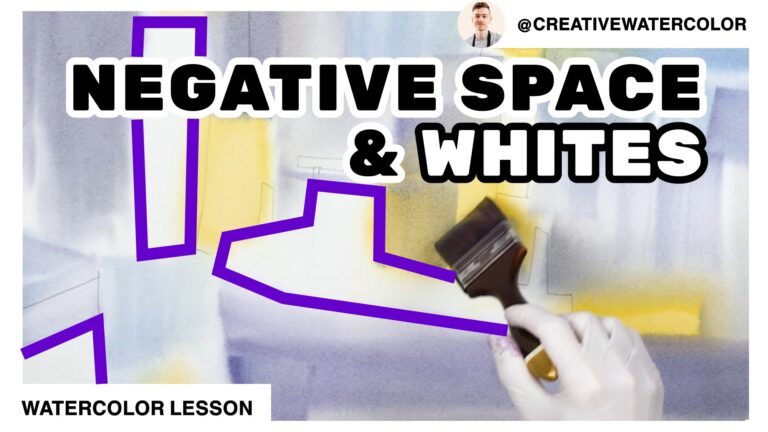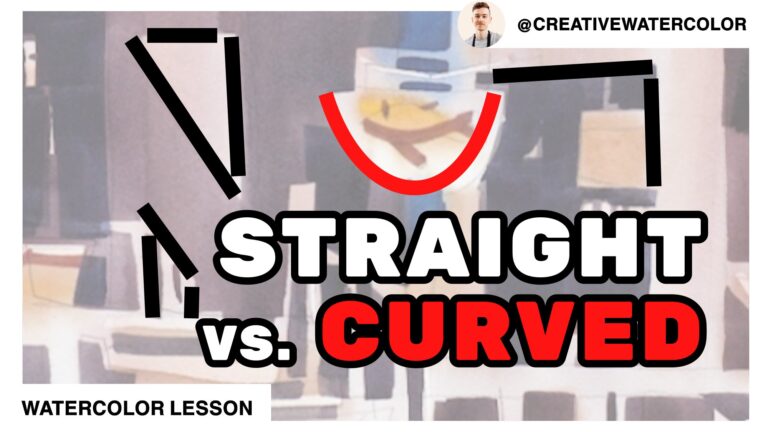Is your watercolor paper holding you back? Learn more about my experience with finding the right watercolor paper in this watercolor lesson!
Hello everybody, welcome back to my studio!
This week we’re going to Inveraray, Scotland – a wonderful coastal town full of paintable scenes. Let’s enjoy this coastal atmosphere together!
Today I’d like to discuss the importance, and pitfalls, of selecting watercolor paper.
My experience indicates, without a doubt, that watercolor paper is the single most important material in any watercolorist’s studio. A good quality paper is not to be taken for granted. And while paper of lesser quality may seem temping in terms of affordability, it comes at a heavy price… Brushes are important, as is paint. But if I had to compromise I would save on brushes first, then paint and only as a last resort would I try to save on paper.
Don’t get me wrong, I can adapt. I don’t have to have the best of the best to produce good results. I can paint on most any paper using whatever brush or paint you put in my hand. The results are bound to be affected by the quality of the materials but it’s still the execution of an idea that counts. That being said, it’s worth considering how paper can affect your development as an artist, especially if you’re still learning.
Many years ago, when I was learning watercolor, I struggled a lot with handling of this wild medium. I didn’t know why. And while it’s true that it’s never just one factor that comes into play when learning anything, I can confidently say that paper plays a major role. So back then, I finally saved enough to buy good brushes, I even managed to get artist quality paint. The results were still underwhelming. I always thought about watercolor paper as an afterthought. Maybe because where I lived I just couldn’t buy true watercolor paper. Importing it was often out of question due to its dimensions and shipping restrictions. Years went by without me ever experiencing actual quality watercolor paper. The other aspect of the problem is that watercolor paper is a consumable item. It’s done after a single use. Therefore it made most sense to save some money on this particular item. Little did I know, it was the paper that held me back all this time!
As soon as I switched to a 100% cotton rag watercolor paper things changed for me so dramatically nobody could believe the change, me included! I’m not exaggerating. Now this may or may not be your problem. But if you, like me, thought that paper is the one item on which you can save some money, it may be worth reconsidering. I understand that everyone has a certain limit when it comes to spending money on a hobby. Trust me, I know – when I was starting out I was broke. I really only could afford so much. But the switch to true 100% cotton rag paper, costly as it was, was worth every penny. My recommendation is to save on brushes, even on paint if you really have to, just don’t skimp on paper.
Throughout the years, my practice has been in financial trouble more than once. Many times I had to choose between a paper of lesser quality or no paper at all. Don’t feel bad if that’s what influences your choice. But if you can manage, always choose paper that is specified as ‘100% Cotton’ or ‘Cotton Rag’. Choose a lesser-known brand which is likely to offer more competitive pricing. Most of the brands I tried (that offer 100% Cotton Rag paper) are of superior painting feel to any non-cotton paper.
And so if you wish to take your practice to that next level and can’t, it may be the paper that’s holding you back. The way the surface takes your wash, how extraordinarily it handles paint and reflects light through its transparent layers once dry – it’s simply miraculous. Watercolor paper is truly not a simple “paper”. The word does it disservice, because today we associate it with regular wood-based writing or packing paper. But true cotton watercolor paper is such a wonderful, valuable material. I really grew to appreciate every opportunity I get to work on this incredible surface.
After years of using quality watercolor paper I was curious to see what my experience would be like if I tried one of the lesser papers again. I thought it might be a good opportunity for discussion with all of you, my viewers, and share my thoughts. And so I purchased Bockingford watercolor paper (non-cotton paper) by St. Cuthberts Mill – a brand that produces the wonderful Saunders Waterford.
And that is the paper I’m using to execute this week’s painting. The particular brand or paper marketing name is irrelevant to our discussion here. This is not a critique or review of this particular paper. It’s my hope that through my experience you may be better able to analyze any potential issues in your practice and correctly identify and resolve their cause.
In the next lesson I’ll be pointing out specific characteristics of using this paper and how it affects my work. So join me for part two as we explore the pitfalls of working on lesser quality paper and the particular effects on one’s technique.
That’s it for today’s lesson. I hope you enjoyed. Let me know in the comments below about your experience with using watercolor paper in your practice. I’m very curious to hear what’s your favorite paper but also about the problems you may have experienced. If you have any helpful tips please leave them below, your unique point of view is bound to help a fellow artist in the future.




